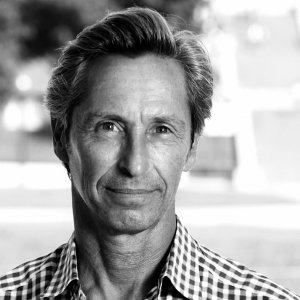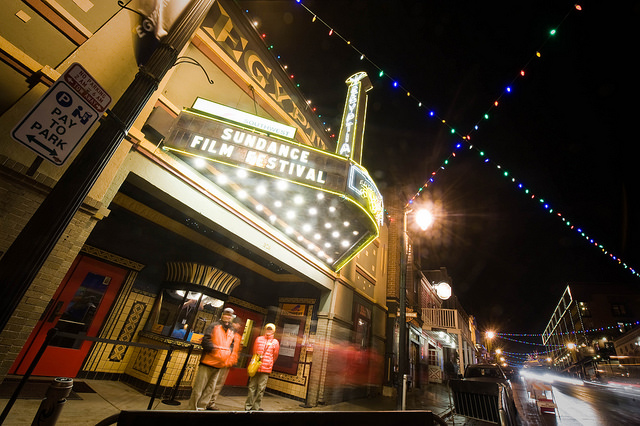Calling all movie buffs—here’s a question to kick off some quick conversation this weekend: What do the films Reservoir Dogs, Memento, Napoleon Dynamite, The Usual Suspects and The Blair Witch Project all have in common?
They all premiered at the Sundance Film Festival, the always-exciting artistic showcase that delivers each year by contributing content and conversations to culture and creators from all stages of storytelling.
Founded in 1985 by Robert Redford, the much anticipated Park City-based Festival that delivers annually with a diverse slate of films commenced in the mountains of Utah on Thursday for an 11-day run.
In between the ski slopes, handshake deals and chaos of creativity, there’s plenty of pomp and pageantry, too—minus the paparazzi—for the filmmakers, movie buffs, stars, C-suite executives and critics who make the field trip to Park City to catch both the big hits and festival flops.
Jared Hendler, director of marketing for the Sundance Institute, took a brief break from the festival to join [a]listdaily and detail how the Sundance Film Festival will deliver this year with environmentally focused programming, how storytelling is evolving and the current trends he’s keeping close tabs on.

The Sundance Film Festival this year will open with a documentary about climate change starring Al Gore in the ‘Inconvenient Sequel.’ Why did you choose to kick-off with this particular project? Are there any themes Sundance-goers can expect this year?
Our programming team has been discussing the idea of an environmental focus for a long while, especially because it’s one of Sundance Institute founder Robert Redford’s most pressing causes. ‘The New Climate,’ as we’ve chosen to call our first-ever thematic programming thread, is a collection of documentaries, short films, virtual reality experiences and off-screen panels about environmental preservation, stewardship and climate change.
What kind of a role will VR be playing this year? How are these immersive experiences being received at Sundance? Is there an appetite?
There’s an immense appetite for VR storytelling. This was the first year that our curators opened submissions for the ‘New Frontier’ category and I know they were so impressed with what they found. Shari Frilot, our chief curator, was able to cherry-pick the absolute latest and greatest of AR, VR and otherwise tech-enabled stories, from artists on the cutting edge.
How is the American independent film market progressing? What common themes are you noticing?
Perhaps it’s the digital age, perhaps it’s the 24/7 news cycle—both of which can be dehumanizing to some degree—but people are more drawn than ever to telling deeply human stories. That rising tide of empathetic and dimensional storytelling, created by independent artists, encourages the year-round work we do at Sundance Institute, which is supporting and amplifying the boldest and most trenchant voices.
How will the second installment of “Digital Storytelling”—the event that unites brand marketers with digital content creators—evolve this year? Why is it critical for marketers to partner with storytellers?
Digital Storytelling is an event that happens at the beginning of the Festival, and their program is independent from ours. They are an Institute Associate, one of the tiers of support we have within our corporate fundraising area. We were happy to welcome them into the fold because storytelling has always been an important part of marketing. Brands are learning to listen—there’s a very real feedback loop between audiences and brands, and it’s tightening daily as analytics advance. There is no better way for them to bring value to their audiences than working with artists who have the expertise and passion to deliver on that. We’re so fortunate to have a wide selection of partners who respect and support the work we do, and who respect the intellect and curiosity of our audience.
Why are so many brands now making documentaries to better connect with consumers? How has brand storytelling and branded content changed?
Brands used to be able to buy their way into an audience through a media buy. While that still can be the case, it is no longer as effective as it used to be given how fractured the media landscape is today. The switch from ‘push’ to ‘pull’—which the entertainment industry knows how to deliver upon so well—is a key driver. If you don’t bring value, the consumer will skip it. Value first, advertising second. The ‘content’ piece is clearly driving now, rather than the ‘branded’ piece. People connect with well-told and substantive stories and, especially in a crowded marketplace, the most informed consumers appreciate stories that involve nuance and service. Brands are seeing an upside in providing more emotionally and intellectually resonant content, rather than just straight product pitches.
How will you be engaging with the public through Sundance’s social media? What is your strategy for your online showcase? Will you be testing any emerging platforms?
Actually attending the Festival is an experience everyone should have—but for those who can’t make it to the mountain, we’ll be livestreaming select live programming, including our signature ‘Power of Story’ panels and our ‘Celebration of Music and Film’ on our homepage and our YouTube and Facebook pages. We’ve got a full schedule of social content as well, with photos and updates from events, screenings, conversations and, of course, lots of local color from the streets of Park City. We’re fortunate to have a very engaged audience and we distribute across multiple platforms in order to reach that audience wherever they prefer to be. What used to require a media intermediary now allows us to go directly to the public, and our content strategy reflects that access. Our goals in outreach are twofold—we strive to reach both artists we can support, and the audiences who will support our artists and the goals of the Institute.
How is Sundance and its sponsors bringing experiential marketing to Park City?
One of the unique aspects of our sponsorships is that they are actually one of our important fundraising channels. Our corporate development team works with brands to support the year-round work we do with artists as well as some of the exciting activations at the Festival. Our superb sponsors are always pushing the envelope on how to best engage our mutual audience of savvy consumers. They’re as game to innovate as we are, which is so refreshing. This year—among many others—we have the Festival Village Presented by Acura, where guests can virtually experience Acura performance and handling through a VR Simulator; SundanceTV HQ, which hosts daily panel conversations and special events; Chase Sapphire on Main, offering local restaurant sampling, celebrity chef demonstrations and exclusive cardholder events; Festival Base Camp presented by Canada Goose, where guests can enjoy daily musical performances. This year, we’ve created an ‘Official Partner’ seal, to highlight the brands that generously partner with the Institute.
What is on top of your marketing “hot list” this year? What emerging trends are you zeroing in on in order to explore and innovate the Sundance brand?
How stories can influence culture and how culture can bring about change. When you look back at the stories that have come through our programs and our Festival, you will be amazed at how many of those were not only personal favorites that you never knew originated with the Institute, but also how many of them have influenced our culture.
How has the Sundance brand strategy and messaging evolved since you took the position in January 2016?
As an Institute we do a lot. That can make for some confusing messaging, so we are looking to be more focused. That being said, there are many things that we do as an organization to support artists all year round that many are not aware of. From our multinational, cross-department (theater and film) labs, to our support of artists via financing and distribution initiatives, along with all of the important work on diversity and inclusion that is threaded throughout all of these programs. We are also working with the next generation of digital creators along with our work with episodic format content. Expect that to all be wrapped up in messaging of how we contribute to our culture. We are the first festival of the year—it starts here. Conversation happens on the ground, with or without us.
Follow Manouk Akopyan on Twitter @Manouk_Akopyan

